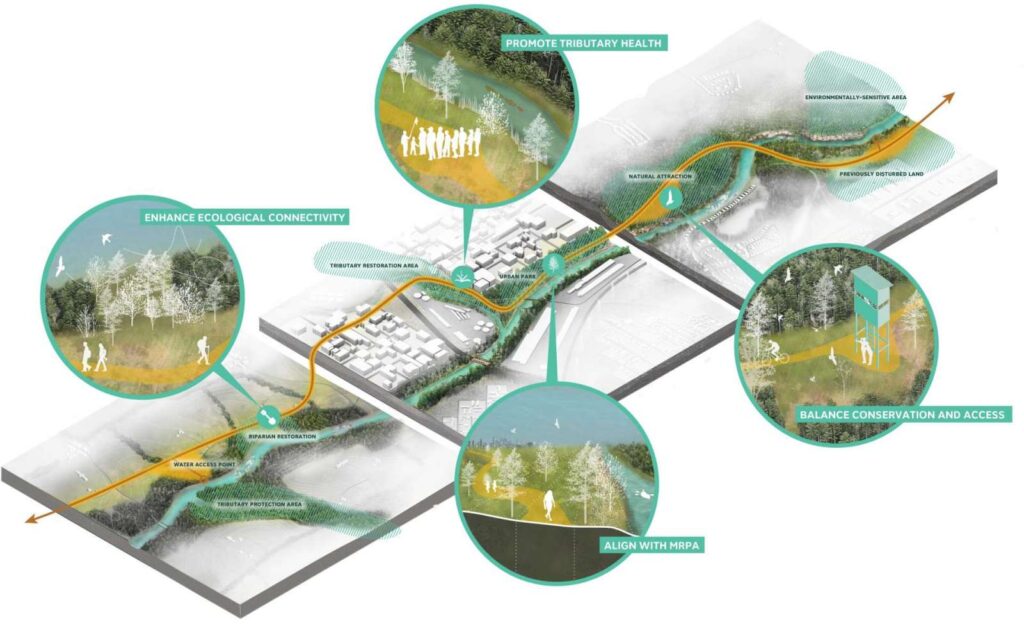
Other Revealing the RiverLands:
An Ecological Refuge

The Chattahoochee RiverLands will improve the ecological health of the river basin and build upon generations of support and stewardship for the health of both land and water. As the Metro Atlanta population grows and the climate changes, ecological connectivity along the River is essential for biodiversity, species movement, and the long-term health of our environment and region. The Greenway will be carefully designed to protect floodplains and sensitive native ecosystems, restore riparian edges and buffer zones, and enhance ecological connectivity. The RiverLand’s trails and parks will create further opportunities for ecological advocacy and citizen science along the banks of the Chattahoochee. The Chattahoochee RiverLands will act as an ecological refuge for an expanding and changing region.

“There are approximately 250 species of birds that breed, overwinter, migrate through, or live year-round in metro Atlanta. The Chattahoochee River corridor provides critical habitat for these birds and other wildlife. It is essential that conservation takes a front seat in planning the greenway.”
Nikki Belmonte, Atlanta Audubon
ENHANCE ECOLOGICAL CONNECTIVITY

The Chattahoochee River corridor is a critical ecological resource for people and wildlife, enabling movement for aquatic and terrestrial species and creating space for migration and adaptation to future conditions. The RiverLands will protect and enable ecological connectivity, ensuring that all species can move along the river corridor by minimizing habitat fragmentation, establishing sensitive river crossings, and restoring and revegetating disturbed sites.
BALANCE CONSERVATION AND ACCESS

The RiverLands Greenway will bypass sensitive habitats and avoid negative impacts on ecosystems throughout the river corridor. Forest cover will be protected or restored along trails, and programmatic elements and access points will be designed to minimize ecological footprints and to include habitat enhancements. The RiverLands must balance access and conservation, preserving today’s ecological resource for the future.
PROMOTE TRIBUTARY HEALTH

Tributaries are the lifeblood of the Chattahoochee River. The RiverLands will create opportunities for the improvement of tributary health and to raise awareness of regional water systems and their quality. Tributary trails offer places for people to connect with the ecological resources “in their backyard,” but must avoid impacts to riparian systems that contribute to river health. Neighborhood-scale stewardship programs can be formed along individual tributaries, creating a scalable method for organizing around the larger Chattahoochee River corridor.
ALIGN WITH THE METROPOLITAN RIVER PROTECTION ACT (MRPA)

The standards defined in the 1972 Metropolitan River Protection Act are critical for protecting the river corridor as an ecological resource. To continue this legacy of protection, the design of the RiverLands will respect the buffers, setbacks, and protection zones established by MRPA. It will also identify existing disturbed and impervious areas as an opportunity for rest areas, paved paths and trail programming. Restoration and stewardship are fundamentals to the RiverLands. The Greenway presents opportunities to further enhance the protection along the river for future generations.



